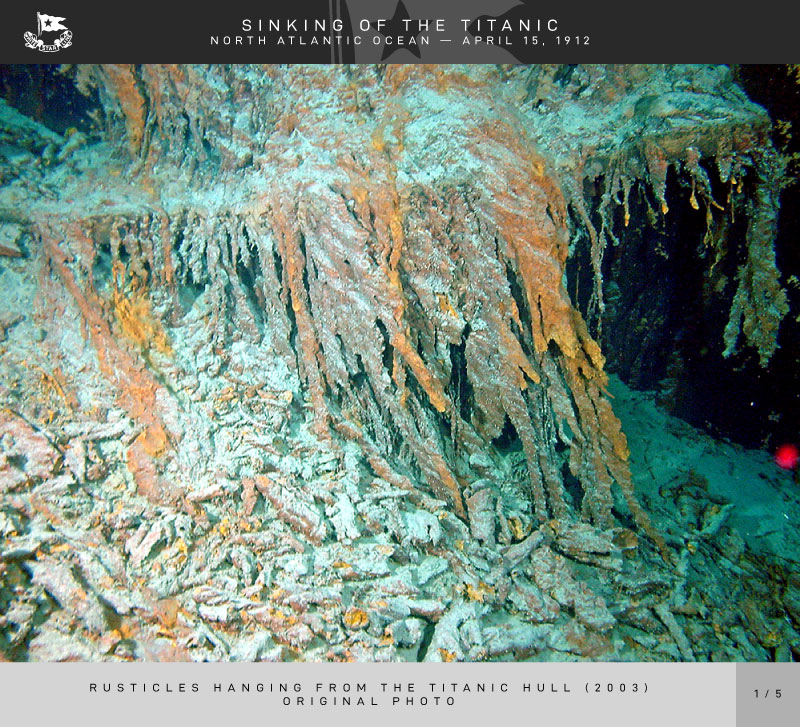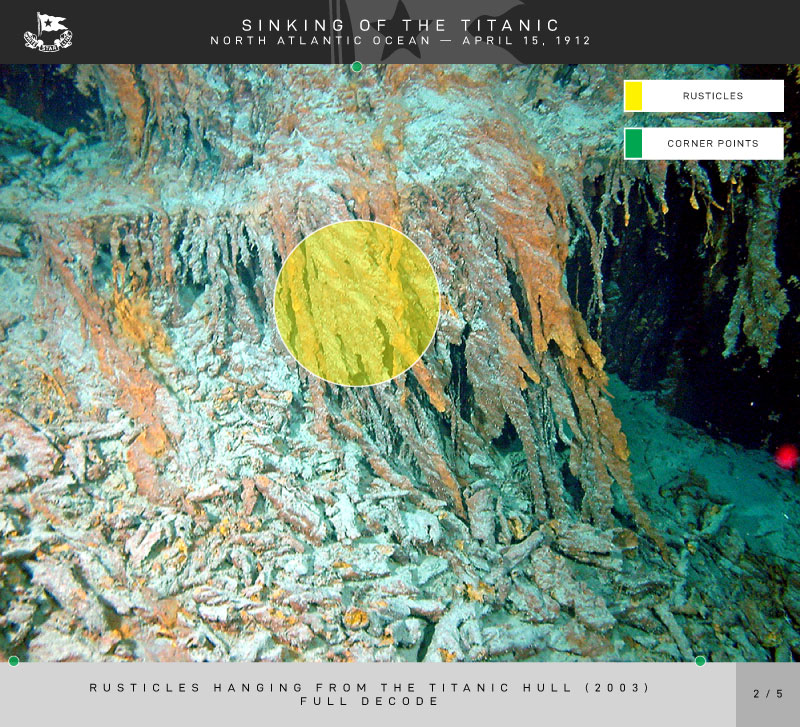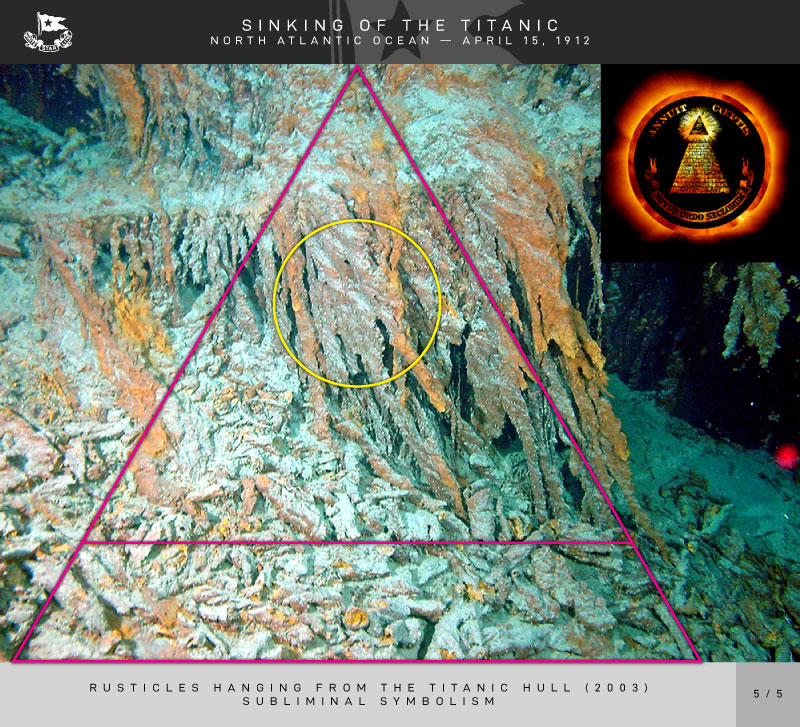Titanic’s Rusticles
The longest-lasting inhabitants of Titanic are likely to be bacteria and archaea that have colonised the metal hull of the ship. They have produced “reddish-brown stalactites of rust [hanging] down as much as several feet, looking like long needle-like icicles”, as Ballard has put it. The formations, which Ballard dubbed “rusticles”, are extremely fragile and disintegrate in a cloud of particles if touched. The bacteria consume the iron in the hull, oxidising it and leaving rust particles behind as a waste product. To protect themselves from the seawater, they secrete an acidic viscous slime that flows where gravity takes it, carrying ferric oxides and hydroxides. These form the rusticles.
When scientists were able to retrieve a rusticle, it was discovered that it was far more complex than had been imagined, with complex systems of roots infiltrating the metal, interior channels, bundles of fibres, pores and other structures. Charles Pellegrino comments that they seem more akin to “levels of tissue organization found in sponges or mosses and other members of the animal or plant kingdoms.” The bacteria are estimated to be consuming Titanic‘s hull at the rate of 400 pounds (180 kg) per day, which is about 17 pounds (7.7 kg) per hour or 4.4 ounces (120 grams) per minute. Roy Collimore, a microbiologist, estimates that the bow alone now supports some 650 tons of rusticles, and that they will have devoured fifty per cent of the hull within 200 years.
Source: Wikipedia
False Flag
A false flag is a covert operation designed to deceive; the deception creates the appearance of a particular party, group, or nation being responsible for some activity, disguising the actual source of responsibility.
3.2 – Titanic Wreck Hull – Detached Rusticles




Subliminal Symbolism




You must be logged in to post a comment.